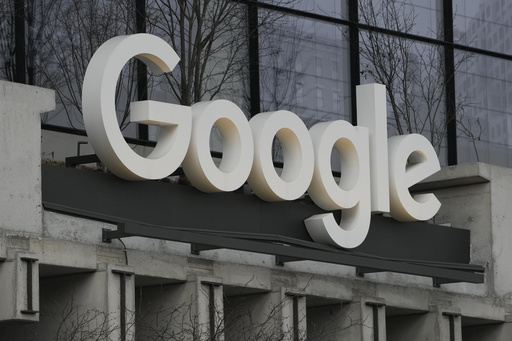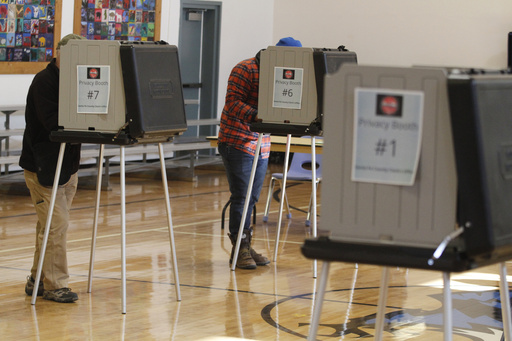A new chapter in energy production for south central Indiana has begun.
Hoosier Energy, a generation and transmission cooperative made up of 18 electric distribution co-ops, including Bartholomew County REMC, has been constructing solar arrays in southern Indiana.
The most recent cluster of solar panels to debut is just south of the Walesboro-Ogilville interchange west of Interstate 65. With its opening, the 3,900-panel array became the first solar farm in Bartholomew County.
Next up is a similar one off Interstate 74 near Greensburg, which will be the 10th such facility constructed by Hoosier Energy in southern Indiana.
[sc:text-divider text-divider-title=”Story continues below gallery” ]
These 10 arrays are intended to establish the cooperatives as alternative energy leaders, Bartholomew County REMC General Manager Jim Turner said during the Sept. 21 dedication of the local array.
Besides generating power, the companies expect their investment in solar energy will generate economic development — bringing more good-paying jobs to southern Indiana, he said.
About 5 percent of the energy now created for Hoosier Energy cooperatives is renewable, but the company has set a goal of doubling that by 2025, said Josh Cisney, a project developer in Hoosier Energy’s Renewable Energy Division.
“Everybody is looking forward to see what happens when we get all 10 of these solar farms into the grid,” he said.
Once all 10 arrays are online, engineers will begin measuring the impact they have on maintaining a consistent quality of electricity at all times, said Heath Norrick, Hoosier Energy’s Renewable Energy Division manager.
“By gathering all data and information, we’ll be better prepared as the technology continues to develop so we can implement this into the future,” Norrick said.
Each solar farm is capable of generating one megawatt annually, which is enough electricity to power about 150 homes, Turner said.
Although the cost of solar energy has declined about 60 percent in the past four years, it’s still too early to consider replacing traditional power sources with the sun, Norrick said.
“The electricity is generated only during daylight hours, but we have companies that are 24-hour operations that require a lot of power,” Norrick said. “We have to have more traditional sources for them.”
In addition, less electricity is created during overcast skies, as well as during the winter trajectory of the sun in the sky, he said.
For the foreseeable future, Hoosier Energy will continue to combine nonrenewable resources — such as coal, crude oil and natural gas — with solar, wind, nuclear power, hydroelectric power and biofuel, Cisney said.
Savings potential
While Hoosier Energy has invested in solar without charging its members more, it’s too early for customers to expect lower monthly bills, Norrick said.
“The cost of solar power would have to drop exponentially in order to actually lower energy costs,” he said.
For now, the cooperatives are hoping to gain the public’s attention regarding the future of solar power.
The placement of all 10 solar farms off major highways and interstates in southern Indiana was intentional, Cisney said.
“We’ve had great acceptance in all the communities we’ve worked with,” Cisney said. “There hasn’t been one who said they didn’t want it there.”
“These arrays give us perspective, so we can all understand what it would take to convert entirely to solar,” Norrick said.
If a $2.5 million investment currently powers 150 homes, it would take a $500 million investment to construct 200 such farms to provide total solar power for all 29,860 homes in Bartholomew County.
Local investment
For a growing number of homeowners, investing in solar panels for their own homes is an answer to financial and environmental concerns. But it’s not something everyone has the time or money to consider.
Obtaining a basic 5,000-watt solar energy system requires an upfront investment of about $21,000, according to the Solar Power Rocks website.
Founded in 2007 with the goal of providing homeowners a clear picture on individual solar installations, the average payback period for solar installations in Indiana — the time it takes to reach the break-even point on investment — is about 16 years in Indiana, the website states. That’s four years longer than the national average.
For retired Cummins Inc. employee Doug Johnson, the payback period will be longer because his southern Bartholomew County home is shaded by 20 acres of surrounding trees. The excessive shade required him to purchase twice the usual number of solar panels, bringing his upfront costs to near $30,000, he said.
“The payback period isn’t the most important thing to me,” Johnson said. “Installing solar was the right thing to do for the environment.”
Another solar investor, retiree Dennis Baute of Columbus, committed $11,500 and received tax credits that lowered that cost to $8,500. Baute calculates his payback period will be 14 years.
Baute, too, has an eye on the future.
Baute said he believes an increasing number of floods, tornadoes, hurricanes and other climate-change consequences can be expected unless all Americans start relying more on renewable energy.
Due to its cost, however, installing individual solar panels should only be considered after taking more affordable energy-saving steps such as adding insulation, lowering the thermostat during winter months and installing energy-efficient light bulbs, Baute said.
Solar-friendly?
Johnson said he believes Indiana lawmakers are not as solar-friendly as they should be.
For example, Gov. Eric Holcomb on May 2 signed Public Law 264, the so-called net metering law that reduces the rate utility companies pay for excess energy that homeowners, schools and small businesses with solar panels or wind turbines sell back to the grid.
That’s much to the dismay of solar advocacy groups such as the Columbus Community Solar Initiative.
Johnson is critical of Indiana for not having mandatory renewable energy standards and offering fewer rebates and tax credits than many other states.
But at the same time, Hoosiers choosing solar power are now being offered improved property and sales tax exemptions, the Solar Power Rocks website said.
[sc:pullout-title pullout-title=”2017 Solar Report Card for Indiana” ][sc:pullout-text-begin]
Solar Power Rocks, an online resource for information on solar energy, has provided a report card on solar power for the state of Indiana.
Policy
D – Renewable energy standards
F – Available solar renewable energy credits
D – Electricity costs
B – Net metering (grade posted before Public Law 264 enacted)
B – Interconnection
Incentives
F – Tax credits
F – Rebates
D – Performance payments
A – Property tax exemption
A – Sales Tax exemption
C – OVERALL GRADE
27 – Ranking among all 50 states in solar power
Source: solarpowerrocks.com
[sc:pullout-text-end]









